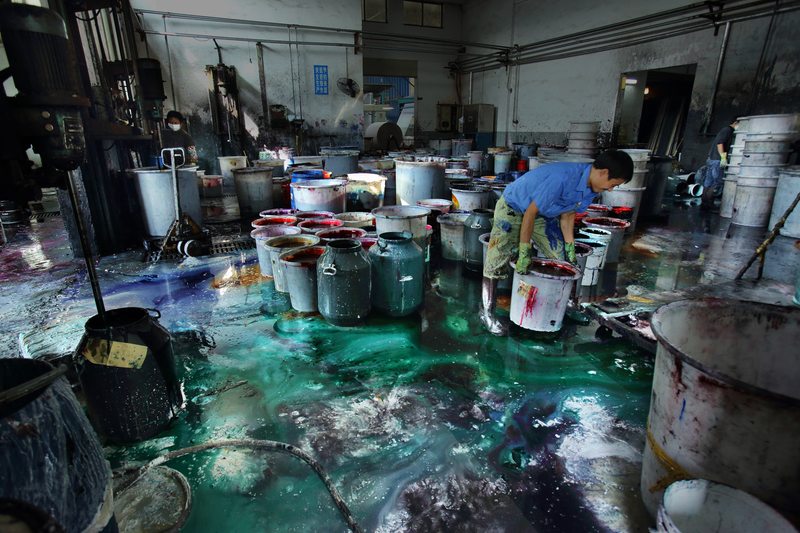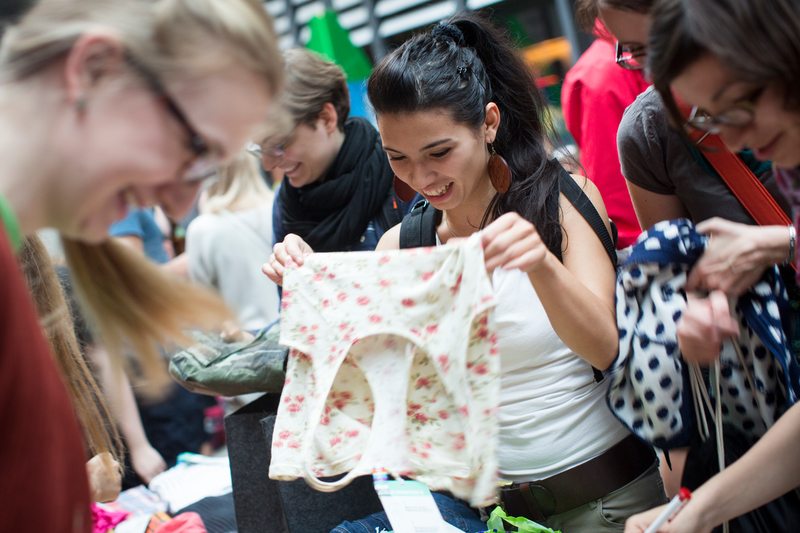Anyone who has recently walked past a clothing store knows: it’s sale time. The temptations are strong: an extra 50 per cent off, prospects of cheap chic, a risk of missing out on bargains. Fast fashion is popular.

Last year the region discarded 110,000 tonnes of textiles, equivalent to about 1,400 T-Shirts every minute – an amount that could cover 25,000 Hong Kong Stadiums.
Stores receive staggering amounts of new outfits each week; moving current stock into the hands of hungry consumers is paramount. With global retailers such as H&M, Zara and Uniqlo now on Australia’s shopping shores, it seems we’ll only go further down the path of faster, cheaper, newer.
Fast fashion means disposable fashion, often following trends that become so yesterday within just a few months. Since it’s cheap to replace that mullet dress with its hipper younger sister, we often do so without thinking twice. ‘Just $20 and I’m riding the trend wave again’ – a mantra I’ve acted upon so often I stopped counting.

Fast fashion shoppers in Hong Kong. Last year the region discarded 110,000 tonnes of textiles, equivalent to about 1,400 t-shirts every minute
But fast fashion raises some concerns about its impact on the environment.
Most of us have limited space in our wardrobe, and all of us have only one body. When we buy something new, it competes for precious wardrobe space; when we wear something new, we don’t wear an older item. We accumulate clothing until we decide it’s time for a cull, then we rid ourselves of it to make room for the new. According to the film The True Cost, the average consumer buys 400 per cent more clothing today than 20 years ago. No wonder we’re seeing a large increase of unwanted textiles in landfills.
On the other end of the chain, producing fast fashion consumes precious resources. Among the most resource-intensive offenders are commonly used fabrics. For example, it takes about 10,000 litres of water to grow enough cotton for one pair of jeans, not to mention the use of pesticides that keep the cotton plants productive. Synthetic fibres aren’t much better though – they are made from oils, petroleum and coal, all of which raise well-known environmental concerns.
On top of that, many clothing companies use toxic chemicals in their production processes. Embraced for their benefits – durable dyes, fabric softeners, and protecting items from moisture – these chemicals eventually work their way into the environment, particularly our waterways. This is an issue Greenpeace is currently tackling.

Greenpeace’s campaign, The Detox Catwalk, assesses companies’ performance against three key criteria. Since starting five years ago, 76 international brands have agreed to walk a more sustainable path, and to eliminate hazardous chemicals by 2020. This year the campaign focuses on companies implementing this agreement, and while some have done superbly, others have fallen behind (see the results here).
But now, let’s focus on you: how can you make a difference? You may have heard of the term ‘dollar voting’, the notion that every dollar you spend casts a vote for the product or service you purchase. So let’s be mindful of spending our money and supporting those who are making a step in the right direction.
As to unwanted clothes, there are many ways to keep them out of landfill. So here are three tips to tackle textile waste:
1. Give your old clothes away
Instead of throwing away your unwanted clothes, why not give them to someone who’ll appreciate them again? Consider gifting them to friends, family, and neighbours. Your loved ones will be happy and you can rest assured that your textiles get their well-deserved second life.
As a second option, consider donating to charity. It’s better to bring your unwanted clothes directly to organisations who need them, but you can also place them into a clothing bin. Beware though: only one third of all donated clothing is deemed good enough for re-selling; the rest is either exported, cut up into rags or disposed of. Donating textiles of higher quality is therefore essential to ensure your clothes don’t take the long route to landfill.
2. Recycle and repurpose
Textiles are versatile – wearing them is just one way of using them. The internet is full of amazing recycling tips. Why not upcycle old denim into funky quilts and unwanted t-shirts into bags, or make accessories like pom poms, scarfs, even rugs? And if there’s really no other use you can always turn them into cleaning rags!

3. Swap your old clothes with other people
Clothes swaps are a great way to meet like-minded people, exchange items, and save clothes from their landfill fate. Re-loving is in and let’s be honest: the idea of giving a once favourite jumper another life is actually really nice! You’ll fill your wardrobe with new (at least for you) items and make your bid to save the environment – a win-win!
Sites like The Clothing Exchange organise regular events in cities all over Australia. Or plan your own swap, invite a bunch of stylish friends and exchange your clothes for pieces you’ve always loved on them!
So there we are. With thrift and imagination we can turn a problem into a way of helping people in need, meeting new friends, and showing off our craftiness. Pretty good, right?
[optin-monster-shortcode id=”yvqepuxvguhcvfh22aie”]
You might also like…
https://www.greenpeace.org.au/wp/green-your-wardrobe/


